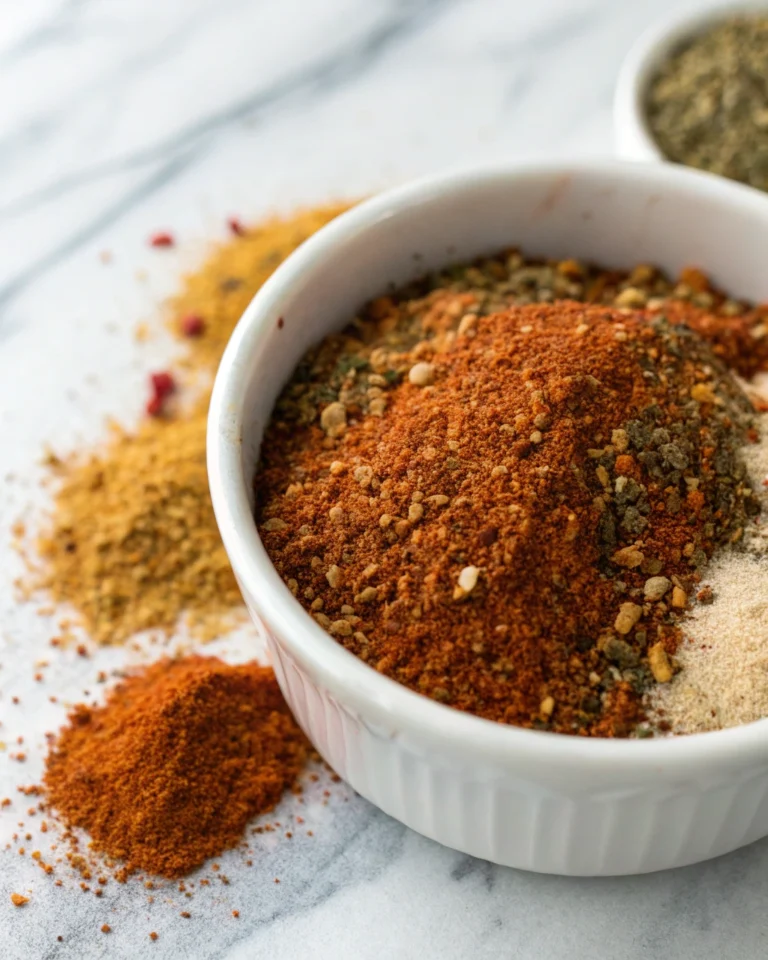Looking to elevate your chicken dishes from bland to bold? You’ve come to the right place! In this article, we’re diving into the world of the chicken seasoning recipe—breaking down the essential spices, how to mix and use them, and how to adapt them for every type of chicken dish imaginable. From classic baked chicken to grilled wings and juicy thighs, we’ll walk you through everything you need to know to master homemade seasoning blends that hit every time.
Along the way, we’ll answer your most burning questions—like what spices to rub on chicken, whether to oil it first, and how to lock in flavor like a pro. Plus, we’ll toss in kitchen-tested tips and a few secret tricks that’ll make you the go-to chicken chef in your family. So, let’s get into the flavorful goodness!
Table of Contents
Introduction to Chicken Seasoning
Why Seasoning Matters in Chicken Recipes
Chicken is like a blank canvas—mild, versatile, and just begging for a flavorful transformation. Without the right spices, it’s just plain boring. That’s where a well-crafted chicken seasoning recipe steps in. Whether you’re roasting a whole bird or pan-frying thighs, seasoning is what turns ordinary into unforgettable. A thoughtful blend can balance sweet, savory, spicy, and smoky notes, giving your dish complexity and depth without overpowering the meat itself.
What Is a Chicken Seasoning Recipe?
A chicken seasoning recipe is a dry or semi-dry mix of herbs and spices that’s designed specifically to complement chicken. It usually features ingredients like paprika, garlic powder, onion powder, thyme, and sometimes even a touch of cumin or cayenne. The idea is to create a versatile blend that works across cooking styles—grilling, baking, pan-searing, you name it.
These seasoning blends can vary by cuisine. Some might lean Mediterranean with oregano and rosemary, while others take a smoky, southern turn with paprika and mustard powder. The key is balance—and once you’ve got that, you’re golden. Trust us, once you try your own homemade chicken seasoning recipe, you’ll never look back at store-bought mixes again.
The Essential Herbs & Spices in a Chicken Seasoning Recipe
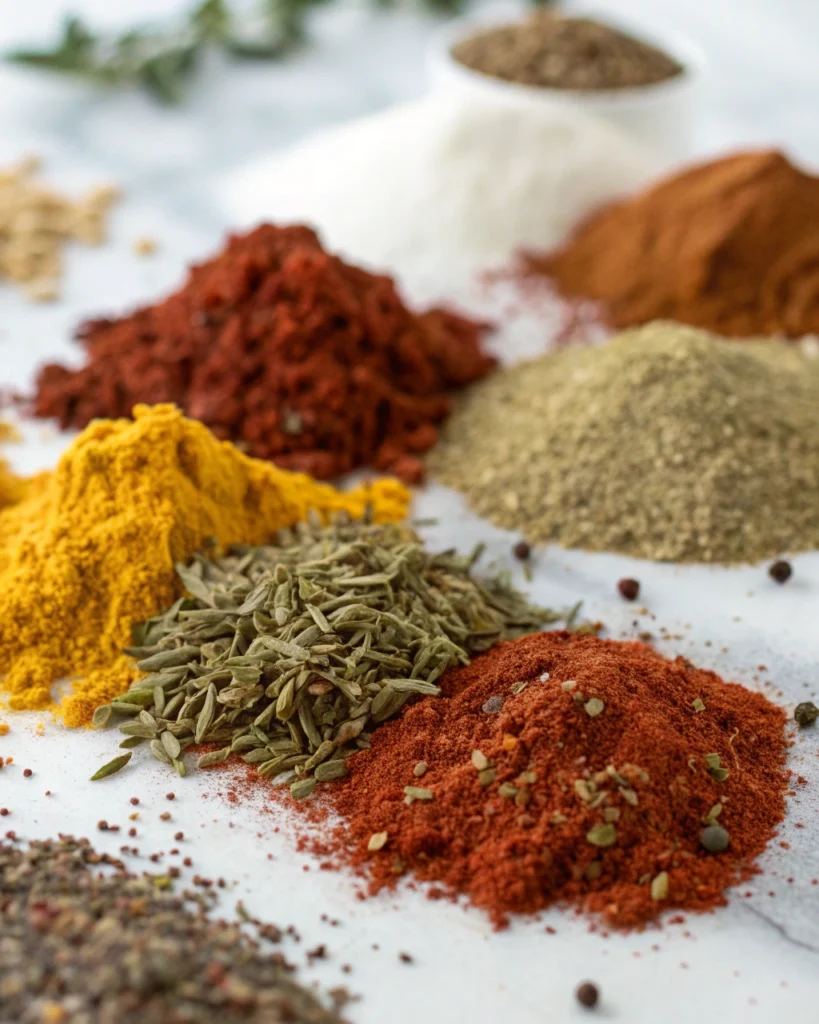
Overview of Base Spices: Garlic Powder, Onion Powder, Paprika
If you want your chicken to taste like it came from a professional kitchen, you’ve got to start with the basics. A good chicken seasoning recipe often begins with three go-to ingredients: garlic powder, onion powder, and paprika. These spices lay down the flavor foundation—rich, earthy, and slightly sweet.
Garlic powder adds savory depth. Onion powder kicks in a mild tang. And paprika? Well, it gives your chicken that subtle smoky kick and a warm reddish hue that screams “delicious.” These three are pantry staples for a reason. They work beautifully together and complement just about any other herb or spice you throw in the mix.
Now, while you could stop here and still get decent results, why settle for decent when you can have downright amazing?
Flavor Boosters: Cumin, Mustard Powder, Cayenne
To crank up the flavor volume, it’s time to bring in the supporting cast. Cumin offers a nutty, slightly peppery taste that gives your chicken a deeper, almost grilled flavor—even if you’re baking it. Mustard powder adds a little zing, making the whole dish feel sharper and more vibrant.
And let’s not forget cayenne. Used sparingly, it brings heat without burning your mouth off. Combined, these ingredients bring boldness to your chicken seasoning recipe, especially when you’re craving that “can’t-stop-eating-it” experience.
These flavor enhancers aren’t just for show—they transform a simple spice blend into something complex, exciting, and completely addictive. Don’t be afraid to experiment with ratios either. A little tweak here and there can lead to your own signature mix.
How to Make the Best Chicken Seasoning Recipe at Home
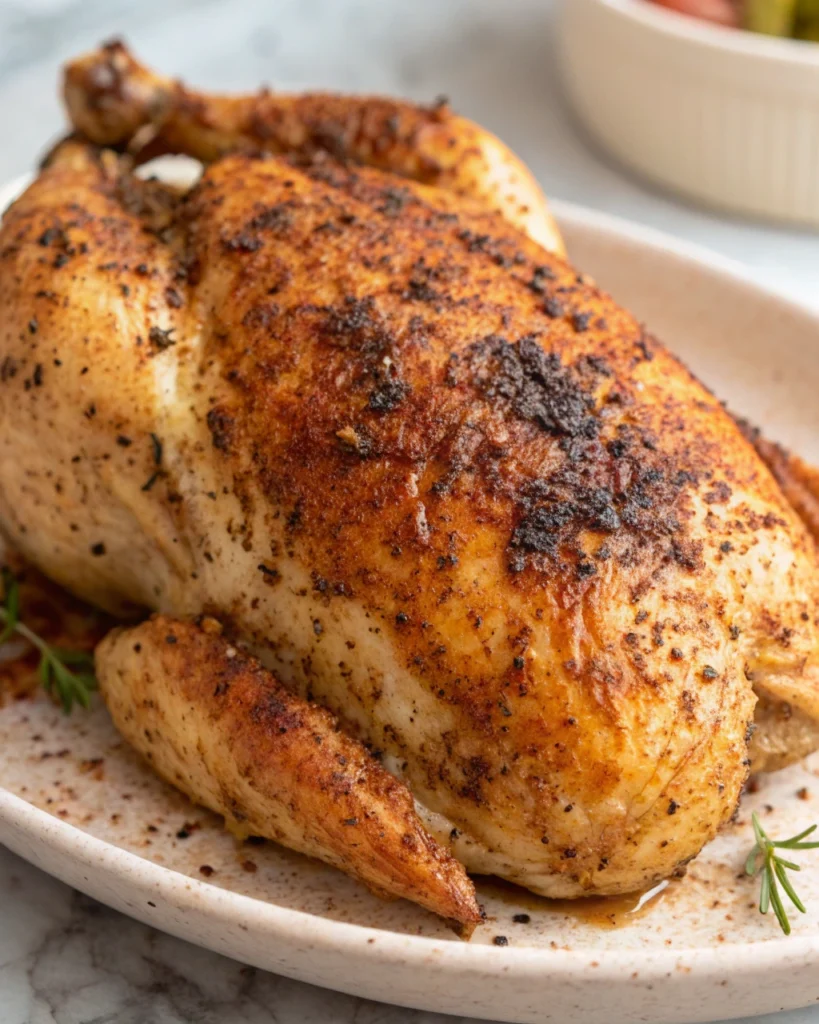
Exact Proportions for the Ultimate Chicken Seasoning Recipe
Here comes the fun part—mixing up your own killer chicken seasoning recipe. Below is a foolproof blend that works wonders on wings, breasts, thighs, and even roasted whole chicken:
- 1 ½ tsp sea salt
- 1 tsp garlic powder
- 1 tsp onion powder
- 1 tsp paprika (smoked if possible)
- ½ tsp dried thyme
- ½ tsp ground cumin
- ½ tsp mustard powder
- ½ tsp black pepper
- ¼ tsp cayenne pepper
- ¼ tsp dried rosemary (crushed)
This blend hits that sweet spot between flavorful and flexible. It’s mild enough for picky eaters but complex enough for serious foodies. And if you’re prepping in bulk? Just double or triple the batch and store it in an airtight jar.
Step-by-Step Mixing and Storage Tips
Making your own chicken seasoning recipe is easier than making a cup of tea. First, toss all the spices into a small bowl. Mix them up with a spoon or whisk until everything looks evenly combined. That’s it!
Store your blend in a glass jar or spice container with a tight-fitting lid. Keep it in a cool, dark place—like a pantry or spice drawer—and it’ll stay fresh for up to six months.
If you love experimenting in the kitchen, this seasoning blend is a great base. Add lemon zest for brightness or a pinch of brown sugar for a caramelized finish. Once you start customizing, you might just become the neighborhood chicken guru.
Types of Chicken Seasoning Recipes for Different Cuisines
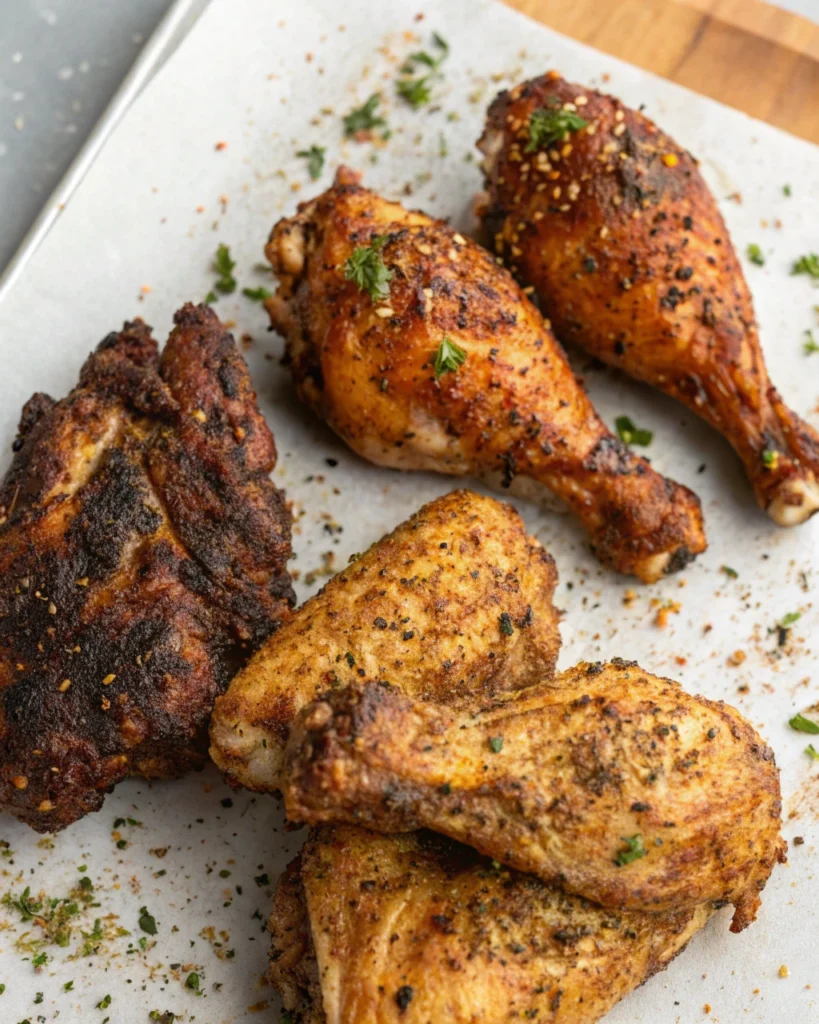
Mediterranean-Style Seasoning for Grilled Chicken
Craving something light, herby, and packed with flavor? A Mediterranean twist on your chicken seasoning recipe might just do the trick. Think oregano, rosemary, thyme, and a touch of lemon zest. Add a pinch of garlic powder, and you’ve got a blend that’s perfect for grilled chicken or skewers.
This style of seasoning is simple but powerful. It’s especially great on boneless chicken thighs or breasts. Whether you’re firing up the grill or using a stovetop pan, this herb-driven blend will transport your tastebuds to the sunny shores of the Mediterranean.
By the way, if you love grilled chicken with bold flavors, check out this recipe for a Grilled Chicken Shawarma Wrap that pairs beautifully with Mediterranean-style seasoning.
Spicy BBQ Chicken Rub for Oven or Smoker
When you’re in the mood for smoky, spicy comfort food, this variation of the chicken seasoning recipe is your best friend. Combine smoked paprika, brown sugar, chili powder, garlic, and cayenne pepper. Add a hint of cumin, and you’ve got a dry rub made for roasting, smoking, or even air frying.
This rub is fantastic for drumsticks, wings, or whole chicken. Just massage it into the skin, let it sit for at least an hour, and bake or grill to perfection. The sweet-and-smoky combo creates that irresistible barbecue crust everyone loves.
And hey—if BBQ isn’t your style today, maybe a dish like this spicy and aromatic Chicken Biryani will be more up your alley.
Herb-Heavy Mix for Roasted or Baked Chicken
Don’t sleep on roasted chicken—it’s one of the easiest and most satisfying ways to cook poultry. For this version of a chicken seasoning recipe, rely on a hearty mix of dried herbs: basil, parsley, sage, thyme, and rosemary. Add a touch of onion powder and paprika, and you’re all set.
This combo pairs especially well with whole chickens or thighs. Roast it in the oven with some root vegetables and your house will smell amazing. It’s cozy, classic, and always a crowd-pleaser.
Cooking Techniques to Maximize Chicken Flavor
Dry Rub vs. Wet Marinade: When to Use Each
When should you use a dry rub and when is it better to go with a marinade? Great question. A dry rub—like your homemade chicken seasoning recipe—is perfect when you want a crisp, flavorful crust. It clings to the meat and creates texture, especially if you’re baking, pan-searing, or air frying.
On the flip side, marinades are great when you want tenderness and deep flavor all the way through. They usually include oil, acid (like lemon juice or vinegar), and your seasoning blend. The acid breaks down the fibers in the chicken, making it extra juicy.
A good rule of thumb? Use dry rubs for quick meals and marinades when you have more prep time.
Should You Oil Chicken Before Seasoning?
Here’s the scoop: yes, oiling chicken before seasoning can really boost flavor. A light coat of oil helps your chicken seasoning recipe stick better, especially when grilling or roasting. It also promotes even browning and keeps the spices from burning too quickly.
You don’t need much—just brush or drizzle a bit of olive or vegetable oil over the surface. Then rub in your spices like you mean it. Trust us, it makes a difference.
If you love rich and creamy chicken dishes, we also recommend checking out the Butter Chicken recipe from our collection—it’s another flavorful way to enjoy seasoned chicken!
Storing and Reusing Chicken Seasoning Blends
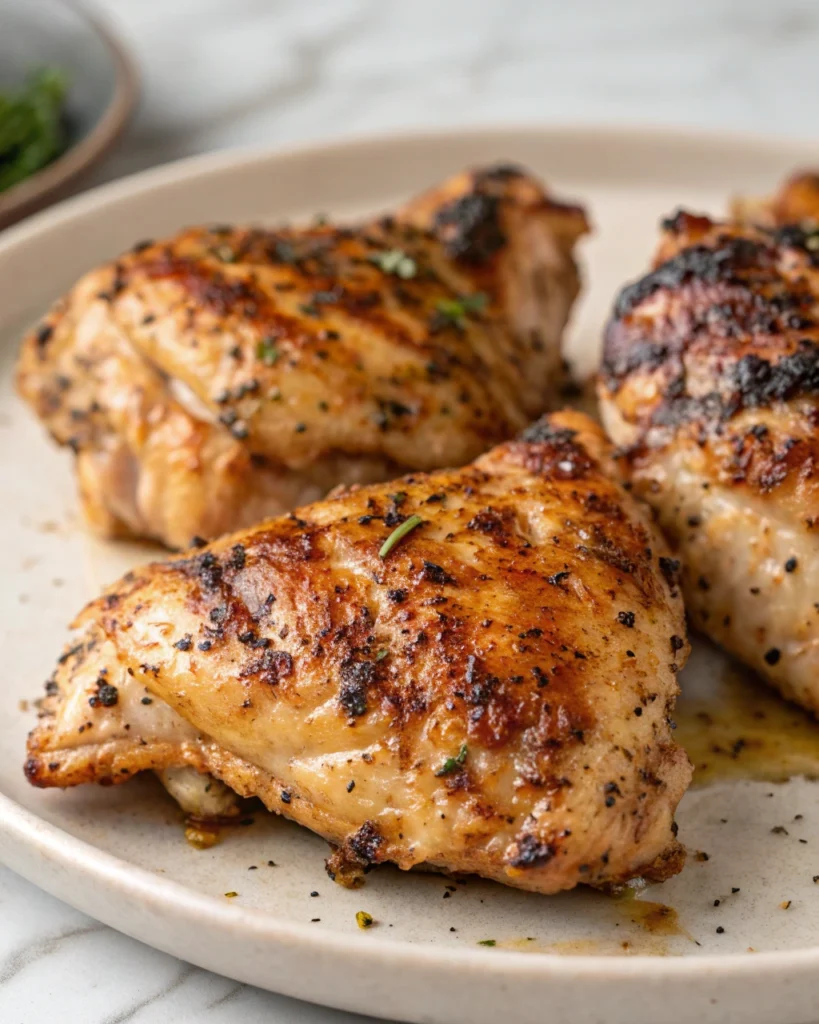
How Long Does a Chicken Seasoning Recipe Last?
So, you’ve whipped up a flavorful batch of your own chicken seasoning recipe—now what? If stored the right way, your spice mix can stay fresh and punchy for up to six months. But here’s the trick: always keep it in an airtight container, away from heat, light, and moisture.
A cool, dark cupboard is your best bet. Glass spice jars with tight lids or recycled seasoning containers work perfectly. Avoid storing it above the stove, where humidity and steam can sneak in and dull those rich flavors.
If your blend starts to smell faint or look faded, it’s time to toss it. After all, fresh spices are the secret to bold, mouthwatering chicken!
Best Containers and Conditions for Freshness
When it comes to storing your chicken seasoning recipe, the container matters more than you might think. Air is the enemy of flavor. So, reach for small glass jars, metal tins, or even BPA-free plastic spice bottles with a secure lid.
Label your blend with the date you made it. That way, you’ll always know how fresh it is. And try not to dip a wet spoon into your jar—it invites clumping and mold.
Want to go a step further? Add a little food-safe desiccant packet to the jar (just like in store-bought spices) to keep things bone-dry and clump-free. Little details like this go a long way in keeping your seasoning mix fresh and flavorful.
Mistakes to Avoid with Chicken Seasoning
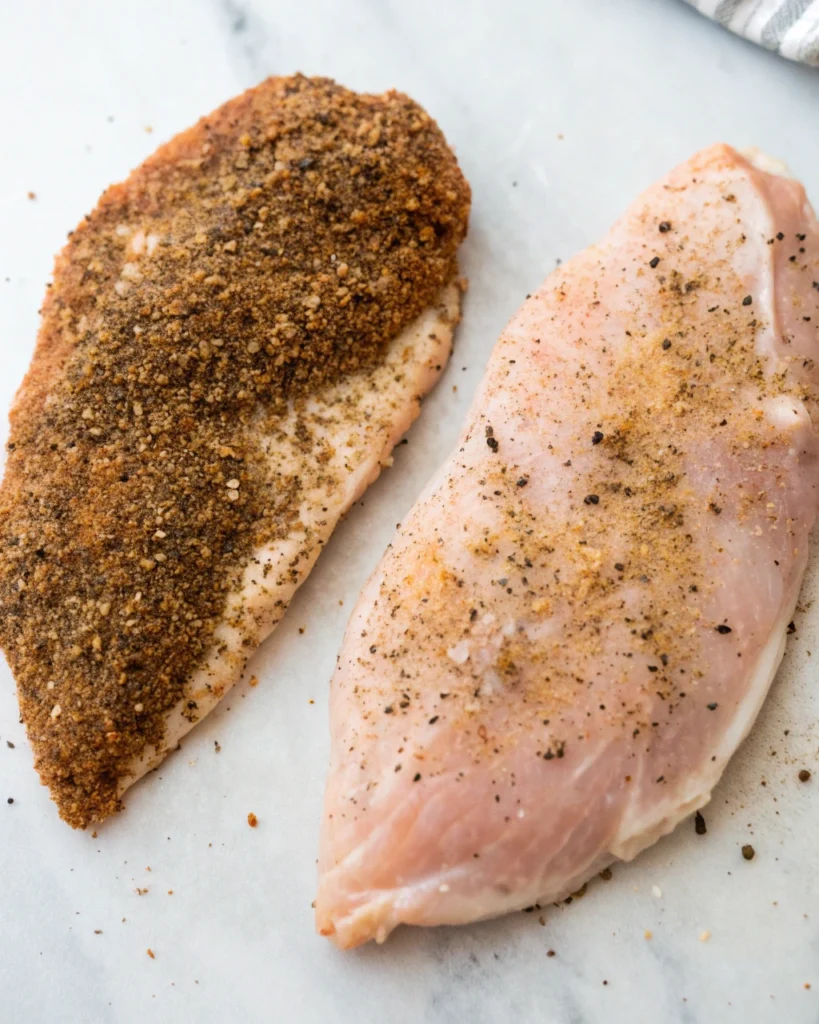
Too Much Salt or Spice: Balancing Flavors
Even the best chicken seasoning recipe can flop if you’re heavy-handed. One common mistake? Overdoing it on the salt. Sure, salt enhances flavor, but too much can overpower everything else and leave your dish inedible.
To fix this, start light and season gradually—especially if you’re also using salty sauces or bouillon. Taste as you go when possible. And if your chicken turns out too salty, a squeeze of lemon or a side of plain rice can help balance things out.
Likewise, watch the heat. That cayenne or chili powder might seem innocent in the bowl, but it packs a punch once cooked. Go easy at first—then tweak the blend based on your heat tolerance.
Using Incompatible Spice Blends
Mixing flavors is fun—but sometimes, things just don’t go together. If your chicken seasoning recipe includes too many strong spices without balance, you might end up with a muddled mess instead of a mouthwatering dish.
For example, pairing sweet cinnamon with smoky paprika and spicy cayenne can confuse your taste buds if not done carefully. Instead, stick to a theme: savory and smoky, herby and bright, or bold and spicy.
Oh, and don’t forget the cooking method! A blend that works great for grilled chicken might not suit a creamy baked dish. Tailor your seasoning to the style of cooking and you’ll always hit the mark.
Simple tweaks like these will save your chicken—and your dinner plans—from disaster!
FAQs – Chicken Seasoning Tips
What Spices Go Well With Chicken?
Chicken is wonderfully versatile, which means it pairs well with a wide range of spices. The best ones to start with? Garlic powder, onion powder, paprika, thyme, oregano, rosemary, and black pepper. These create a solid base for any chicken seasoning recipe.
If you’re feeling adventurous, try adding coriander, turmeric, or even a pinch of cinnamon for depth. But remember—less is more when combining bold spices. Start with the basics, then build flavors to suit your taste.
What Spices to Rub on Chicken?
Dry rubs are all about layering flavor. A solid rub for chicken includes a blend of salt, pepper, paprika, garlic powder, and dried herbs like thyme or parsley. Want more punch? Toss in a bit of cayenne or cumin.
This kind of rub sticks well to chicken, especially when lightly oiled. Whether you’re roasting, grilling, or air frying, the right mix gives your dish that crave-worthy crust. A reliable chicken seasoning recipe makes this step easy.
What Spices to Put in Chicken Food?
When seasoning for stews or mixed dishes, go for spices that blend well with sauces and grains. Think turmeric, coriander, bay leaf, and cloves. These spices work beautifully in slow-cooked meals or rice-based dishes.
Still, don’t overdo it. A little goes a long way—and even a simple chicken seasoning recipe can elevate your entire plate when used right.
What to Add to Chicken to Make It Tasty?
To boost taste instantly, try a combination of acid and fat along with your seasoning. Lemon juice, yogurt, or a splash of vinegar help break down the chicken and lock in flavor. Pair that with olive oil and a balanced chicken seasoning recipe, and you’re golden.
You can also try adding fresh herbs, a touch of honey, or a smoky rub depending on your recipe. Keep tasting and adjusting as you go.
How to Best Season Chicken?
The best way to season chicken is to start with a dry surface. Pat the meat dry, rub it with a little oil, and apply your spice mix generously. Let it rest for at least 15 minutes—or overnight for deeper flavor.
Whether it’s grilled, baked, or seared, seasoning early makes all the difference. And having a go-to chicken seasoning recipe in your kitchen means you’re always ready to deliver top-notch flavor.
What Brings Out the Flavor in Chicken?
Seasoning, searing, and cooking method all play a part. Spices alone are great, but heat helps unlock their full potential. So don’t skip the browning step, and be sure your seasoning includes both salt and aromatics like garlic and herbs.
A good squeeze of lemon or a splash of broth at the end also brings everything together beautifully.
How Do I Give Chicken the Best Flavor?
Marinating or using a dry rub based on a solid chicken seasoning recipe is key. Add herbs, spices, and a bit of oil to help the flavors sink in. Cooking with confidence—whether in the oven, on a grill, or in a skillet—also helps intensify flavor.
Also, consider the sides! Pairing your chicken with complementary vegetables, rice, or breads helps complete the taste experience.
Do You Oil Chicken Before Seasoning?
Yes, and here’s why: oil acts as a glue that helps your seasoning stick. It also creates a crisp crust when cooked and prevents spices from burning. Just a light coat will do the job—no need to drench it.
This step turns a simple chicken seasoning recipe into a knockout blend that cooks evenly and tastes incredible.
What Seasoning to Put on Whole Chicken?
Whole chickens need bold flavors that can penetrate deep. Use a mix of salt, garlic powder, onion powder, paprika, dried thyme, rosemary, and black pepper. You can also add lemon zest or chili flakes for extra punch.
Make sure to season under the skin and inside the cavity too. That way, every bite gets infused with your signature spice blend.
Conclusion
Bringing out the best in chicken doesn’t take fancy ingredients—just the right mix of herbs, spices, and a touch of care. Whether you’re grilling thighs, baking breasts, or roasting a whole bird, a thoughtful chicken seasoning recipe makes all the difference.
Now that you’ve got the know-how, the flavor possibilities are endless. So go ahead—experiment, taste, tweak, and make this your go-to guide for chicken that never disappoints.
Print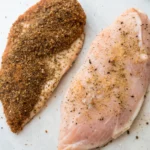
Chicken Seasoning Recipe
- Total Time: 5 minutes
- Yield: 12 servings
Description
A bold, flavorful chicken seasoning recipe made with pantry-friendly spices like paprika, garlic powder, cumin, and thyme. This easy, all-purpose blend works perfectly for grilling, roasting, or pan-searing chicken. Mix once and use it over and over to bring out rich, mouthwatering flavor in every bite!
Ingredients
– 1 ½ teaspoons sea salt
– 1 teaspoon garlic powder
– 1 teaspoon onion powder
– 1 teaspoon smoked paprika
– ½ teaspoon dried thyme
– ½ teaspoon ground cumin
– ½ teaspoon mustard powder
– ½ teaspoon black pepper
– ¼ teaspoon cayenne pepper
– ¼ teaspoon dried rosemary (crushed)
Instructions
1. Add all the spices to a small mixing bowl.
2. Stir well until everything is fully combined.
3. Use immediately or transfer to an airtight spice jar for storage.
4. To use: Rub generously onto chicken before cooking. Works great on thighs, breasts, wings, or a whole chicken.
5. For best flavor, let the chicken sit with seasoning for at least 15 minutes—or refrigerate overnight for deeper taste.
- Prep Time: 5 minutes
- Cook Time: 0 minutes
- Category: Seasoning Blend
- Cuisine: American, Mediterranean, Fusion
Nutrition
- Calories: 6 kcal
Keywords: chicken seasoning recipe, spice mix for chicken, homemade chicken rub, dry rub for chicken, best chicken spices
Did you make this recipe?
There are no reviews yet. Be the first one to write one.

